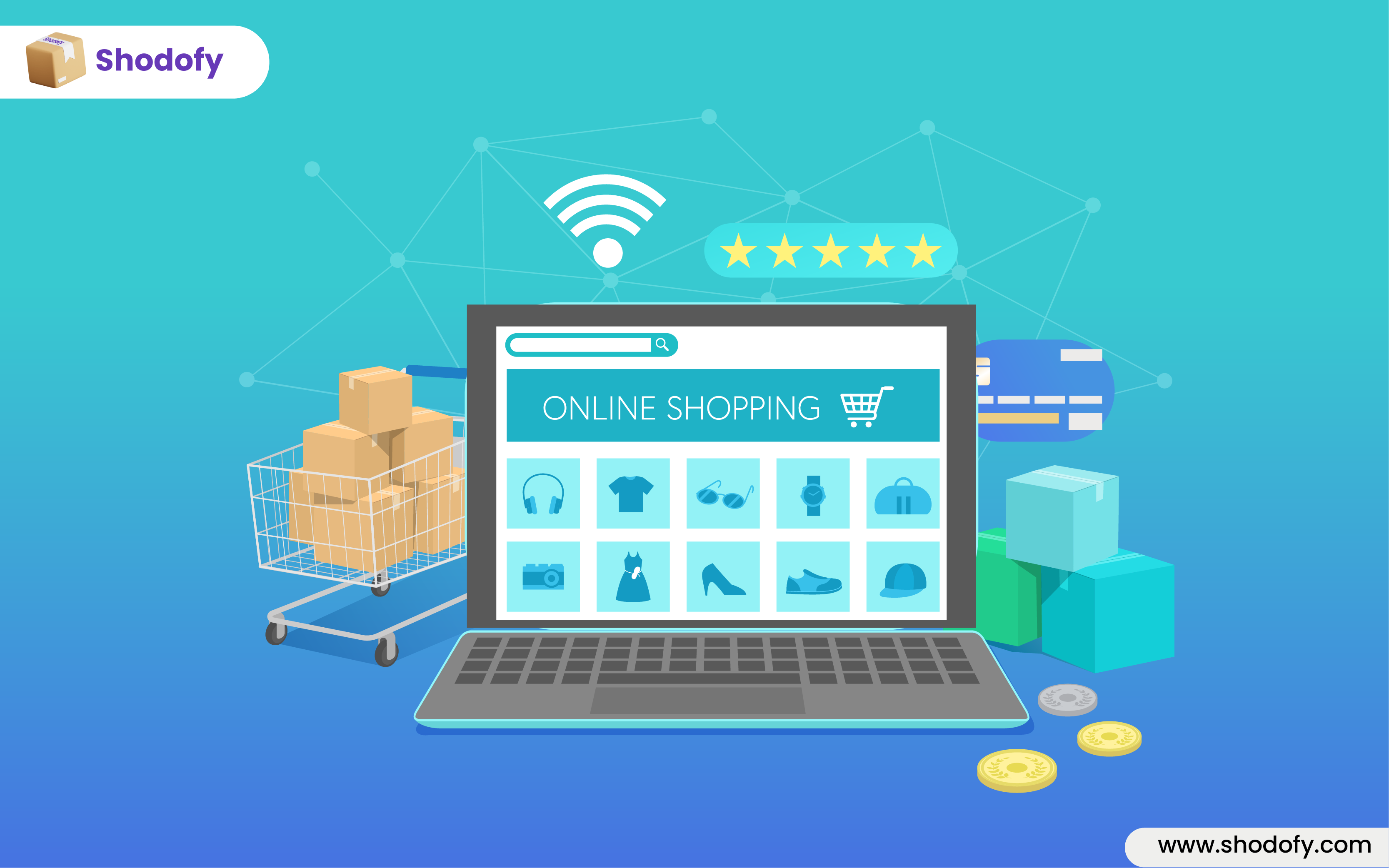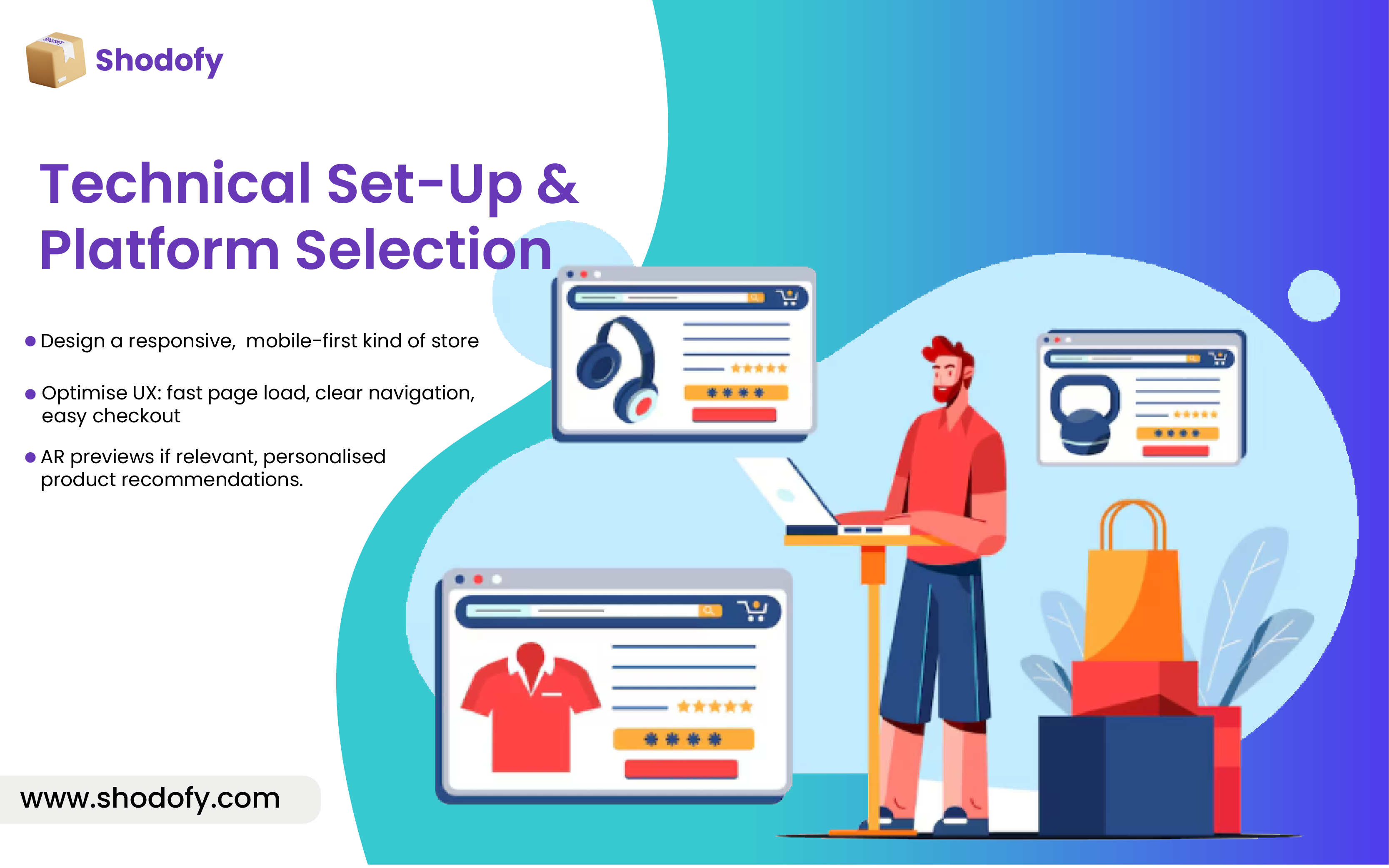How to launch an ecommerce store business in 2026?
If you're looking to set up an ecommerce business in 2026, especially in the US, you're in the right place. Whether your goal is to even start an online store for business in 2026 or even carry out a full ecommerce store setup in the USA, this guide also walks you through all the steps from the basic initial planning to even launching.

What is an e-commerce business?
An e-commerce business is any company that buys and sells goods or services over the internet. It allows entrepreneurs to reach a global customer base without the need for a physical storefront. Transactions, marketing, and all customer engagement take place online through the websites, mobile apps, or even its online marketplaces like Amazon, Shopify, or even its WooCommerce.
In 2026, e-commerce isn't just about selling products,it'ss also about creating seamless, personalised and even tech-driven shopping experiences. With the rise of AI,automations, and all the digital payment innovations, setting up an ecommerce store today means building a brand that also operates 24/7, connecting across multiple channels, and scaling globally with minimal overhead.

Understanding the 2026 ecommerce market landscape
While diving into the deep setup process, you'll want to get a clear picture of what's changing and what's not in the ecommerce.
Some facts you need to know
E-commerce is still a growing post-pandemic. One of the sources forecasts that all the global ecommerce sales will rise from US $6.9 trillion in 2024 to US $8.1 trillion by the time of 2026.
Some of the trends shaping stores in 2026
- AI-powered personalization of the shopping journey.
- Voice search and voice commerce are becoming more common.
- Augmented reality (AR) for all the product previewing and immersive experiences, sustainability, transparency, and ethical sourcing.
- Gaining purchasing influence, hyper-local fulfillment, and all the faster delivery expectations, flexible/headless commerce architecture is becoming its standard.
You'll want your stores to be built in a way that allows you to adapt quickly both technologically and in user experiences.
User expectations in 2026 will demand more than just a website; they expect convenience, speed, relevance, and transparency.
If you're doing an ecommerce store setup in the USA, you'll also face US-specific operational/legal/logistics factors (taxes, shipping, returns) that you must factor in early.

Define your foundation: niche, product, and business model
Now let's move into planning your store. This is where you decide what your business will be and how it will operate.
Choose your niche & product range.
You can easily choose or even pick up the category or the set of products you are passionate about, and that you can differentiate in a niche helps you to even stand out rather than being just another general store.
- Research demand: Are people searching for your products? Is there competition? What are shipping/return implications, particularly in the USA?
- Decide on our business model: will you hold inventory, dropship, use print on demand, or hybrid? Achh has trade-offs in control, cost, and speed.
Setting your business model and operations
If you want to start online stores in 2026 targeting the USA, you might also consider:
- Registering a US entity or even using a US-friendly service for all the tax/shipping.
- Selecting warehousing/fulfillment strategy (domestic vs cross-border)
- Planning for all the customer services, returns, shipping speed, all of which customers expect more of this now.
Branding & Positioning
Create a brand identity: name, logo, voice, values. With its sustainability and transparency becoming more important, your brand's values also matter.
Position your store: what makes it different? e.g., eco-friendly sportswear delivered same day in major US cities or even its custom home-goods for all kinds of coastal homes shipped from Florida.
Domain hosting legal: reserve your domain, sort trademarks/patents/legal protections if also needed, and set up your business legally in the USA.

Technical Set-Up & Platform Selection
With your groundwork in place, let's move to building your store.
Choosing the right ecommerce platform
There are many strong platforms, e., Shopify, PrestaShop. For a U.S.-based store, you'll want one that also handles all kinds of US payments, shipping, tax laws, and more. Consider the need for its scalability and modern architecture-2026 trends point to headless commerce and API-first approaches.
Integration: it is helping to easily make sure you can easily integrate with the tools you'll need, inventory management, CRM, marketing, shipping,multi-channels (marketplaces and all the social commerce)
Build your website
- Design a responsive, mobile-first kind of store (many kinds of users will shop via mobile)
- Optimise UX: fast page load, clear navigation, easy checkout.
- Incorporate trend-relevant features: voice-friendly search, AR previews if relevant, personalised product recommendations.
- Set up payments ( US credit cards, PayPal, shipping rates, taxes.)
- Setup legal pages: privacy policy, returns policy, terms of services, US-specific compliances (data protections, state laws)
- Supply chain & fulfillment
- You can easily decide where you will hold inventory (US warehouses,drop-shipper, hybrid)
- Set up shipping logistics: domestic USA shipping speeds are a competitive advantage in 2026.
- Returns have a clear process. Returns are increasingly a factor in the customer experience.
- Inventory & order management: you can choose tools to even track stock, orders, shipping returns.

Marketing your store and launching
How you attract customers and convert them is vital. Let's look at launch and beyond.
Pre-launch preparation
- Build a landing page or a coming soon page to capture interest/emails.
- Create social media presences, especially where your audience is.
- Content plan: blogs, videos, and social posts will help you build authority and SEO.
- Influencer/affiliate planning if relevant.
- Plan launch offers, discounts, or even special value to encourage early buyers.
Launch strategies
- Leveraging multiple channels: paid ads(Google, Facebook), social commerce shoppable posts, email marketing,
- Consider marketplaces in the USA alongside your own store for additional channel reach. Use personalization: the recommended products, customizing offers based on its behavior, or also its segment. Trends show personalization is even more non-optional.
- Using analytics: when tracking traffic, conversion, cart abandonment, and customer lifetime value. Optimize from day one.
Post launch growth & optimization
Improving SEO: blog content, product descriptions, retention: email marketing, loyalty programs, subscription models, if appropriate.
Expand channel: social commerce, voice commerce, marketplaces, international markets. Optimize fulfillments and logistics: faster shipping, local fulfillment centers, and improved packaging.
Monitor trends & tech: keep an eye on new kinds of tools (AI, AR voice and update your store accordingly to stay competitive).

Financials, Legal & Compliance
Operating in the USA brings specific requirements. Do not skip this:
Financial & Pricing
Ensuring you calculate product cost, shipping + returns + marketing + overhead to define your pricing. Sales tax: The USA has many kinds of jurisdictions, making sure you're compliant in the states you shop in Payment fees, shipping fees, and possible cross-border fees if you sell it internationally all affect your margins.
Legal/Compliance
- Business registrations: if you are someone from the outside of the USA but want a US-facing e-commerce store you may also need an appropriate kind of US entity.
- Data protection/privacy: The USA has state laws, and you may also collect customers' data to address complaints.
- Terms of service, refund/return policy, and consumer rights: which have this kind of information clearly stated on your website.
- Intellectual property: trademark your brands, ensuring all your kind of products don't infringe on other IP.
- Shipping/import/exporter: If you are someone who imports products into the USA, you may also face some kind of customs duties. If you ship internationally, you also need to comply with all of its export rules and local laws.

Metrics & Success Measurement
Also, knowing if your e-commerce business is also thriving by tracking the right kind of metrics. Key metrics for monitoring
- Visitor traffic and all kinds of sources
- Conversion rates
- Average order value
- Customer acquisition costs
- Customer lifetime value
- Return/refund rate
- Inventory turnover and all the fulfillment costs
- Shipping time and delivery satisfaction
- Retention and repeat purchase rate.

Did You Know ?
When running a successful online store, it's not just about selling its great products; it's also about managing hundreds of moving parts efficiently. shodofy is designed for the modern entrepreneur. shodofy is an intelligent online store management system that simplifies complex operations, automating routine tasks and helping your e-commerce business scale with ease. shodofy gives you the tools to stay organised, efficient and ahead of all the competition.